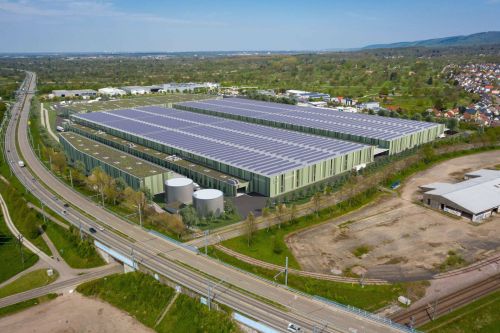Sectors bucking the 2019 trend
Stock market reportLast year was marked by tensions and risks for investors: the trade war between the US and China dampened the mood on the global stock exchanges, and so did the slowdown in China, the jitters in Europe brought on mainly by the never-ending Brexit saga and also the weakening of the German economy. All of these conspired to create a bear market. On the other hand, it was difficult to ignore the rude health of the US economy, where consumer spending is driving growth encouraged by a buoyant labour market. The low interest rates in the US and Europe, as the central banks worry about the prospects for economic growth, also needs to be added to this mix. All of these factors have led to increases and even the New York S&P500 index (considered to be the most representative of the US economy) hitting historic highs several times. In 2019 it rose by almost 30 pct – the biggest leap in six years. The European stock exchanges also saw significant rates of return – the highest (of 30–40 pct) could be seen on the Greek and Irish bourses.
The WIG20 index seems very flat against this background, losing more than 5 pct over the year, while the broader WIG index ended the year at a level similar to that of the end of 2018. This contrasts starkly with the country’s economic figures, where Poland has been doing surprising well considering the performance of the German economy. The continuing marginalisation of the Polish capital market, the poorly ‘market-oriented’ management of state-owned companies (mostly those on the blue chip market), and the weakness of banking (with the spectre of Swiss franc mortgages still hovering over the sector), have reduced enthusiasm on the WSE, as can be seen in its falling turnover and, most of all, in the shrinkage in the number of companies listed on the trading floor. In 2019, 23 companies pulled out of the WSE, whereas only seven made their debuts. For the third year in a row the exchange has lost companies – as many as 68 delisted over this period. There’s little indication that this trend will be reversed in 2020. As far as the forecasts for the indices are concerned, a survey by ‘Parkiet’ predicts (as it did a year ago) the WIG20 growing by around 2,300–2,400 points and thus generating rates of return of around 8 pct. Greater rises are expected for small and medium-sized companies – in the 10–15 pct bracket. 2020 is expected to be a moderately good year for the economy, although weaker than 2019. However, as recent years have shown, good economic figures have not boosted the demand for shares in Warsaw – incentives resulting from the launch of employee capital plans could be a more important factor (although the scheme has yet to take off). Returning to our 2019 summary, the good performance of the sector was noteworthy. We have become accustomed to stable increases in the developers’ index over the last few quarters, pushing it up to the third best performing WSE index in terms of returns in 2019. That the construction index has moved up into fourth place may come as a bigger surprise: companies in this sector have not been among investors’ favourites, and the reports from the construction market – the rising labour costs and the underestimation of contracts signed with the state – have left firms in a situation where they have to be satisfied with the minimal margins. However, the WIG-Construction index went up by 18 pct in the final few weeks of 2019, mainly due to the excellent performance of Budimex’s shares (up by 33 pct in the last seven weeks of the year), since this company has the greatest weight in the index. When it comes to the developers’ index, the increase amounted to just less than 5 pct over the same period and to almost 30 pct over the year. The end of the year brought good news for Polnord, which had failed to take advantage of the boom on the residential market in the last few quarters (when it sold only 227 homes, 70 pct less than a year earlier). Hungarian residential developer Cordia announced its intention to buy the company at the end of December. This news has allowed Polnord to repay bonds that matured at the end of 2019. Analysts claim, the Hungarian developer is mainly interested in Polnord’s huge land bank of plots in Warsaw, the TriCity and Łódź. This is not the first time a Hungarian developer has decided to invest in a WSE-listed developer – Wing, which is acquiring Echo Investment, is waiting for the approval of the anti-trust authorities. In 2019, American fund Madison took on a controlling interest in Capital Park and has not concealed its desire to pull the developer out of the WSE. It’s possible that there will soon be another takeover that will have an impact on the number of listed developers – Awbud, which is controlled by Murapol, has announced that it might be set for new ownership, as Murapol could be taken over by Ares Management Corporation, which manages assets worth USD 144 bln. (Mir)
Growth for the neighbours
The BUX index did much better in 2019 than the WIG20 – gaining more than 18 pct. The gap between the growth rates of both indices particularly started to widen around the end of the year. This is down in particular to the health of the Hungarian economy, which has been attracting substantial investment from international corporations, as well as the fact that its banking sector (which includes huge player OTP bank, responsible for driving much of this growth) has few of the burdens that its Polish counterpart has to contend with. The Czech PX 50 index also increased, by more than 10 pct, in line with the general trend on the global stock exchanges.






















































